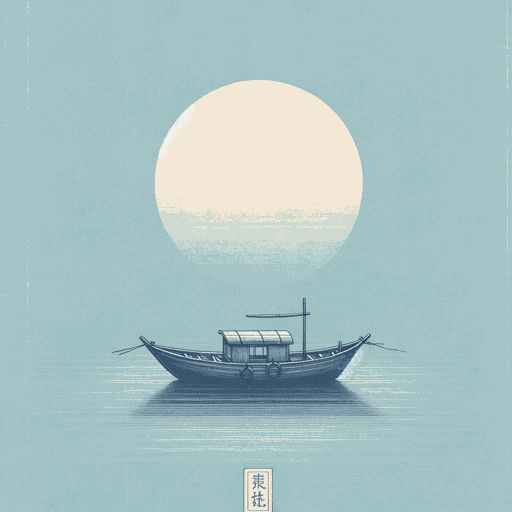68 pages • 2 hours read
Erika LeeThe Making of Asian America: A History
Nonfiction | Book | Adult | Published in 2015A modern alternative to SparkNotes and CliffsNotes, SuperSummary offers high-quality Study Guides with detailed chapter summaries and analysis of major themes, characters, and more.
Summary and Study Guide
Overview
The Making of Asian America: A History is an investigation of the Asian experience in the Americas, written by US historian and author Erika Lee. Lee examines several Asian communities, including the Chinese, Japanese, South Asians such as the Indians and Pakistanis, and Southeast Asians from the Philippines, Vietnam, Laos, and Cambodia. Her overall timeline encompasses a period between the 16th and the early 21st centuries.
Lee uses an intersectional approach, focusing on race and ethnicity, sex and gender, and class to foster a deeper understanding of diverse Asian American lives. The author also combines social and legal history, the history of colonialism, imperialism, and foreign policy, and uses individual biographies to illustrate her arguments. Despite the vastly different backgrounds, what historically unifies this immigrant experience is societal prejudice, institutional discrimination, and legal exclusion on the one hand, and resilience and dignity on the other.
The Making of Asian America was published in 2016 by Simon & Schuster. A Kindle edition is used here.
Content Warning: The source text deals at length with racism, discrimination, and occasional acts of racially motivated violence.
Summary
Lee’s book is divided into five Parts that are both chronological and thematic. The first Part discusses the early Asian immigration into the Americas, in which immigration to Central and South America and the Caribbean predated that of the United States and Canada. This initial migration wave was part of British imperialism shipping labor, such as coolies, across its Empire.
Part 2 discusses the arrival of Asians in the United States and Canada in the mid-19th century and examines their life until the early 20th century. For some groups, like the Filipinos, this experience was shaped by American imperialism after the Spanish-American War (1898). For others, like the Koreans, Japanese imperialism left them stateless. Immigrants from the Indian subcontinent met with race-based exclusion in Britain’s self-governing colony, Canada, despite their status as fellow British subjects. The author examines the Gold Rush, Chinese exclusion laws, and the powerful racist, anti-Asian concept of “Yellow Peril.” Lee also unpacks the relationship between migration, class, and sex, as it was mostly working-class men who relocated to the Americas.
Parts 3 and 4 focus on World War II and the Cold War domestically and internationally. In the United States, Canada, and parts of Latin America, those of Japanese descent were uprooted and incarcerated as “enemy aliens.” Others, like the Chinese, South Asians, and Filipinos, suddenly found themselves “redeemed” by fighting on the side of the Allies. In turn, US foreign policy in the framework of the Cold War shaped the experiences of the Koreans in a country divided and the Japanese under US occupation. The aggressive American Cold War containment foreign policy in Southeast Asia was, in part, responsible for immense destruction and civilian suffering during the Vietnam War on the one hand, and humanitarian efforts accepting refugees on the other.
Part 4 also discusses a newer phenomenon of transnational immigrants living between at least two countries in the context of globalization. The final Part of the book addresses the multifaceted Asian American identity in the 21st century, informed both by societal success and new forms of racism, along with the power and vulnerability of this community.
The author addresses several themes in this book. First, colonialism and imperialism—European, American, and Japanese—are responsible for shaping the lives and experiences of Asians at home and abroad for several centuries. The question of sex and gender is another important topic. The author discusses different aspects of gender norms: from the initial, predominantly male labor migration to the Americas to the discrepancies between gender roles in the US and in traditional cultures in the immigrants’ ancestral homelands. Similarly, class is another important category in The Making of Asian America, including questions of labor rights, social mobility, and socioeconomic disparities in Asian American communities historically and today.
Methodologically, the author combines several approaches to weaving such a complex narrative. She relies on the social history of ordinary people from different ethnocultural groups in their countries of origin and in the Americas. Lee also examines in detail the immigration laws that excluded or welcomed Asian immigrants, and specific Supreme Court legal cases, such as the one of Fred Korematsu, a prominent Japanese American civil rights activist. The author uses individual biographies of different immigrants to illustrate her arguments and document and honor their stories of struggle, survival, and thriving.
Lee also situates the experiences of specific immigrant groups in broader historical contexts—for instance, European, American, and Japanese imperialism, World War II, and the Cold War. Overall, The Making of Asian America is an important contribution to understanding the experience of historically marginalized communities in the United States, Canada, and beyond.
Featured Collections
Asian American & Pacific Islander...
View Collection
Books on U.S. History
View Collection
Colonialism & Postcolonialism
View Collection
Community
View Collection
Contemporary Books on Social Justice
View Collection
Globalization
View Collection
Immigrants & Refugees
View Collection
Politics & Government
View Collection
SuperSummary Staff Picks
View Collection

